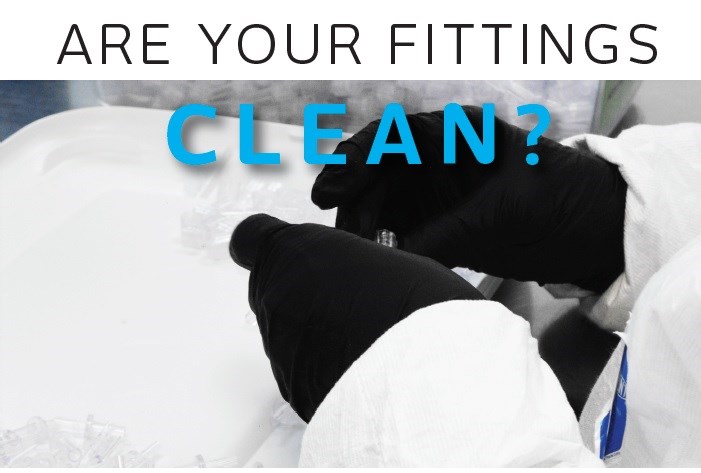Are Your Fittings Clean: The Importance of Clean Room Manufacturing in the Medical Industry
Published date: 22 Aug 2019

“In the medical industry, you have to do it, it’s a no brainer.” This was the response received when a Production Manager with 20 years of experience molding plastic components for medical devices was asked about clean room manufacturing.
A clean room environment provides stability, reliability and control over the molded fittings which translates to the medical devices used in patient care and surgical procedures. Whether or not components are clean room manufactured is one of the top factors impacting the decision to outsource manufacturing and which company to outsource to. By understanding the benefits of clean rooms, fitting and medical device manufacturers will be able to recognize the positive impact they can have on their processes, procedures, and outcomes.
Clean rooms are regulated and classified by the International Organization for Standardization (ISO) in the United States and Canada by ISO 14644-1. This regulation includes clean room classes from one to nine with one having the highest degree of cleanliness and nine being the least clean. The most common classes of clean room environments are ISO Class 7 and ISO Class 8. A clean room class is determined by the cleanliness of the space in compliance with the quantity and size of the particles per volume of air allowed. Air purity is achieved through high efficiency particulate air (HEPA) filters. A clean room serves to ensure small particles don’t affect the manufacturing process through control of humidity, temperature and pressure within the environment.
Medical devices and the parts used in tandem with them fall under intense scrutiny for cleanliness and sterility by governing bodies such as ISO and the FDA. Many medical device manufacturers require clean room manufacturing to provide the reassuring knowledge that the fittings chosen to incorporate into their device will help them comply with their regulatory requirements. By manufacturing, assembling, inspecting, and bagging the plastic components inside a clean room the ability to meet sterility and regulatory compliance is easily achievable. Because clean room environments must comply with their own set of standards, it sets the ground work for compliance with medical device standards.
Clean room environments provide increased reliability for the manufacturer as everyday contaminants, dust and other particles are eliminated so as to not affect the processes or the fittings. Component manufacturers want to instill the same trust in their fittings as medical device manufacturers want to instill in the hospitals using their devices. It is very important that the company offering clean room manufacturing is visited. Companies may claim to have clean room manufacturing; however, it could only be one machine in a clean room. This can result in conflicts or issues such as delays if the production schedule for this machine is busy or if the machine breaks down. Another item to review is the actual testing of the clean room. Make sure the room has been tested in a “running” state along with an “at-rest” state. The “at-rest” test provides a better cleanliness report as there are no people or moving machines. The “running” state will show exactly how clean the room is during manufacturing.
Manufacturing in a clean room demands a high level of training and competency of the personnel inside to maintain the environment standards and overall cleanliness. The individuals chosen to assemble, inspect, and bag fittings in the clean room have undergone extensive training that reflects the needs of the ISO requirements. The required competency and heightened attention to processes by individuals performing the procedures provides greater accountability from those inside and outside of the clean room.
A clean room provides an elevated amount of control over the operations and functionality that can assure medical device manufacturers that the parts they are receiving will be reliable. With the benefits of efficiency, competency, accountability and ability to comply with sterility and regulatory standards, clean room manufacturing truly is a “no-brainer.”
Read the published article in Medical Plastics News European Edition here - https://www.medicalplasticsnews.com/news/keeping-clean/




Leave us your comment
You need to login to submit a comment. Please click here to log in or register.